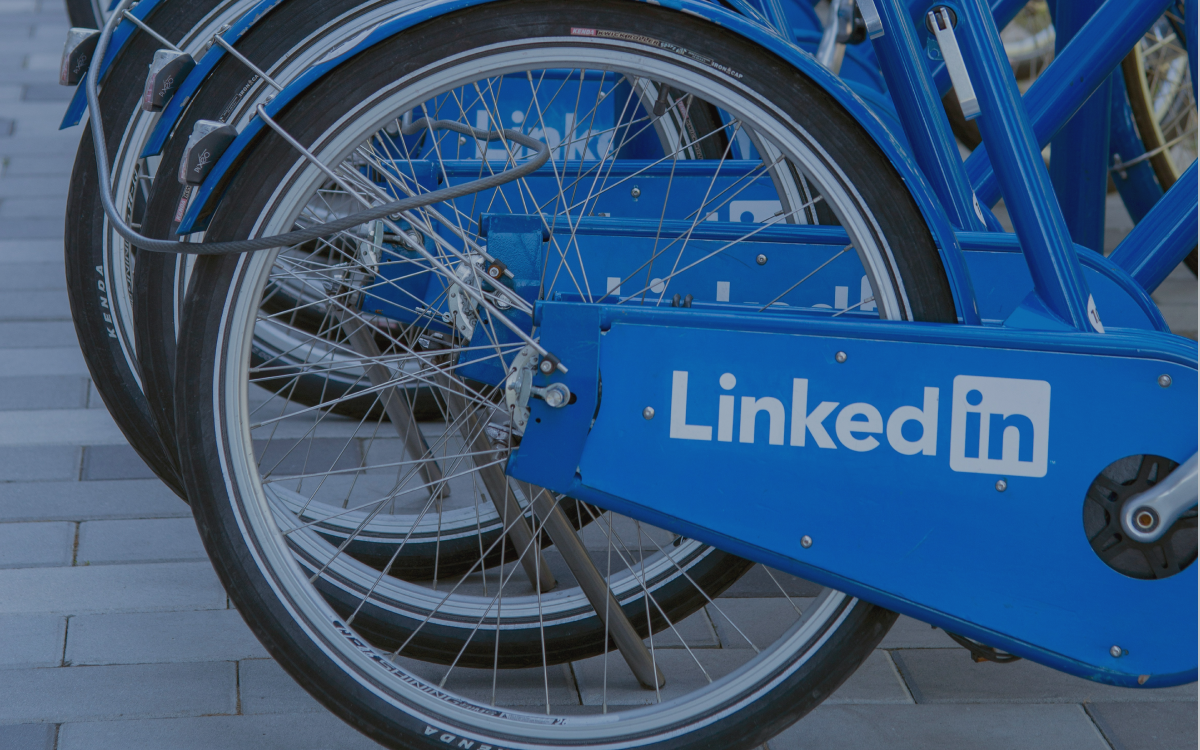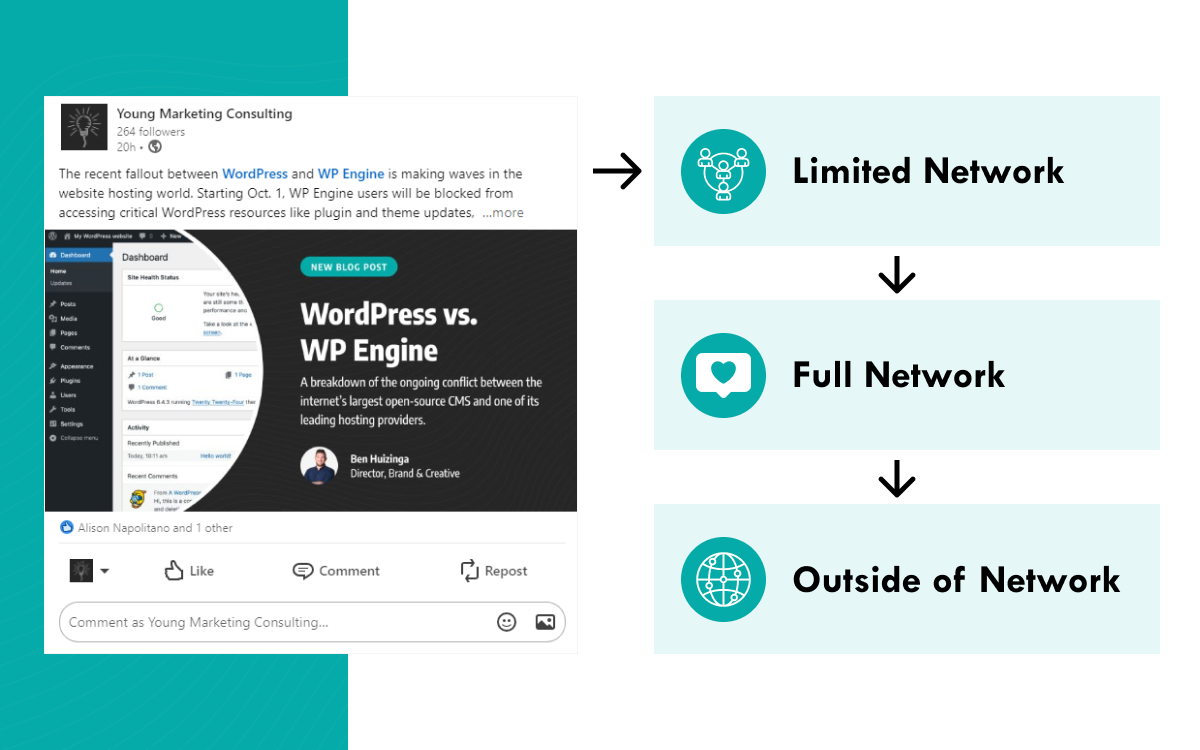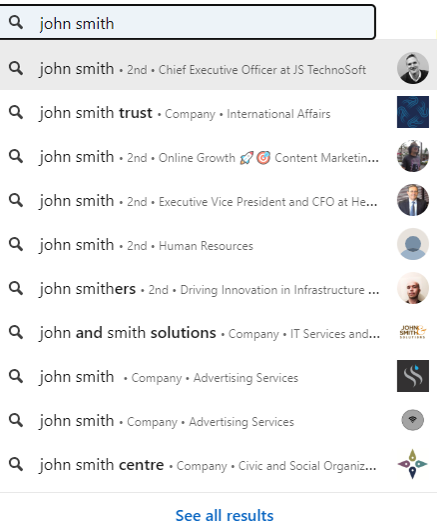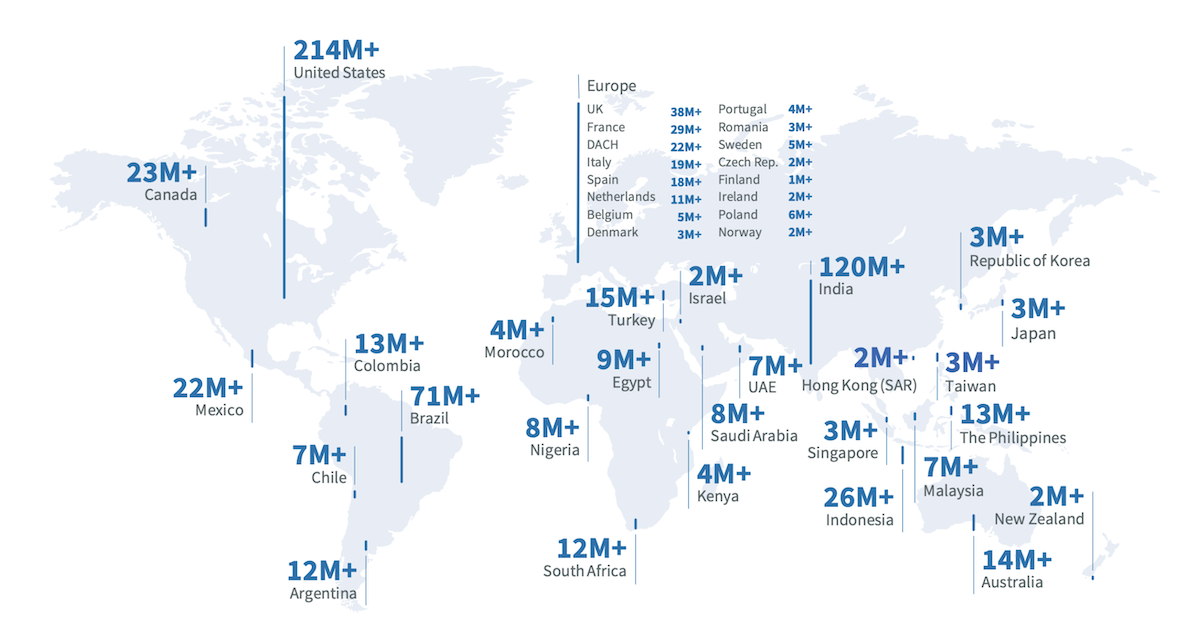
How Does LinkedIn’s Algorithm Work?
Compared to platforms like Twitter and Meta, LinkedIn’s algorithm is much more concerned with content “quality”, with quality defined as posts that show engagement from other humans on the network. After you click post, here’s what happens to your content:
- First, LinkedIn tests your content’s engagement by showing it to a small sample of your followers based on your connection closeness and their profile interests
- If the algorithm detects “meaningful” engagement, or it judges that your post is timely/viral, LinkedIn will expose it to a larger portion of your network
- If you reach high enough engagement levels, LinkedIn will display your post outside your network
Of course, you can always accelerate this process by boosting your posts, which immediately expands your reach beyond your network.

Because of this process, most LinkedIn content has a longer tail than other social networks.
How Do LinkedIn Followers Work?
In the past, people had to connect with you to see your content, but LinkedIn has been moving toward a more follower-based model where other users can follow you to see your content but not connect to be able to message you and see your contact information.
Two types of followers exist: company and individual followers. The big difference is that a company can only have followers, not connections, and of course your employee and company follower networks will be different.
What Are LinkedIn Posting Best Practices?
Our experience has shown several best practices that can help your content make best use of the algorithm:
- Post content as early in the day as possible: If your goal is to get in front of as many other users as possible to jumpstart your engagement, it’s best to start early in the morning when they’re all waking up and checking their phones. And to help make sure that they see your updates…
- Coordinate an internal liking/reposting process: Ask your colleagues, employees and team members to engage with your content via likes, shares, and comments. You can make use of the “Notify employees” feature on your company’s posts to help this process along.
- Tag everyone: You’ll also want to tag others in your posts liberally – this helps drive that important early engagement
- Post articles where possible: LinkedIn’s goal is to keep users within its ecosystem, so that it can show them more advertising. To that end, data has shown that posting articles (which are long-form content pieces housed on LinkedIn) as opposed to posts, provides much better search visibility. Posting articles also allows you to invite your followers to your newsletter, which can help grow engagement.
How Can You Improve Your LinkedIn Search Appearance?
Search operates similarly to content posting, in that it will first show you close connections and stated interests. For this reason, it’s important to fill out your profile as completely as possible, including hashtags and interests. Of note, however, is that you have maybe 80 characters to work with in the typical results box, and LinkedIn can choose to show different combination snippets of your profile’s headline and position (take a look at the different “John Smiths” in the result below.
So, you’ll need to balance brevity with trying to talk about everything you do. Our recommendation is to choose the work you’re pursuing (or would like to be known for) in your headline and title as succinctly as you can.

What is the Best Use Case for LinkedIn?
LinkedIn’s tools help organizations and their teams in three broad areas:
- Corporate branding and HR, through Job postings, Learning tools, and Talent Insights
- Growth, via sales and marketing tools like the Services Marketplace, Sales Navigator, and Advertising platform
- Engagement, via company pages, groups, and profile content
How Many People Use LinkedIn?
Linkedin claims to have more than 1 billion users worldwide, although these numbers are likely inflated for investors. If you go by 225 million U.S. users, for example, that would be close to 90% of all adults in the country. A more reasonable estimate comes from the Pew Institute for Internet Research, which claims that 28% of US adults (approximately 72.2 million people) use LinkedIn regularly.

Image Source: https://kinsta.com/blog/linkedin-statistics/
Share this post on your social profile:
A performance-driven marketing strategist with twenty years of experience growing international brands and organizations, Tim Young spent time at the Corporate Executive Board (now Gartner) and the Entrepreneurs' Organization before founding Young Marketing Consulting in 2013.
His areas of expertise include brand growth and identity development; lead generation and conversion; search engine optimization (SEO); customer satisfaction evaluation and improvement; customer segmentation and CRM work; ROI analysis and improvement; market research; and product development.
Want to get our blogs directly to your inbox?
Enter your email to sign up for our point of view on marketing trends, brand strategy, and sustainable business.


